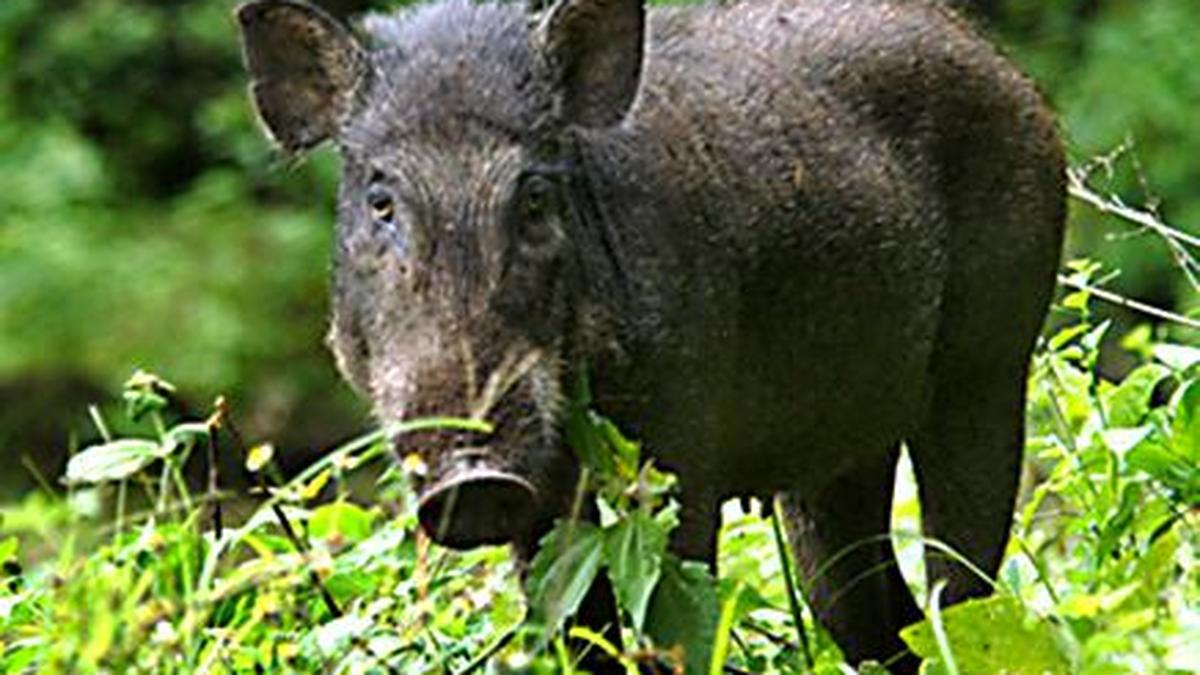In Focus Podcast | Why are species extinct in the wild, and now only in captive collections, top priority? – The Hindu

Report on Threats to Biodiversity in India and Alignment with Sustainable Development Goals
1.0 IUCN Assessment of Natural World Heritage Sites
A recent assessment by The International Union for Conservation of Nature (IUCN) has identified several natural World Heritage sites in Asia as being of “significant concern.” This evaluation underscores the mounting pressures on vital ecosystems, directly impacting the achievement of the Sustainable Development Goals (SDGs), particularly SDG 15 (Life on Land).
- The Western Ghats
- Manas National Park, Assam
- The Sundarbans, West Bengal
The deteriorating health of these sites signals a critical challenge to global commitments to halt biodiversity loss and protect terrestrial ecosystems.
2.0 Primary Threats to Ecosystems and Wildlife
The IUCN’s World Heritage Outlook 4 report identifies multiple interconnected threats that jeopardize biodiversity and undermine progress on several SDGs. These threats require a multi-faceted response aligned with the 2030 Agenda for Sustainable Development.
- Climate Change: Identified as the single greatest threat to wildlife, its impacts directly contravene the objectives of SDG 13 (Climate Action). Failure to address climate change accelerates habitat degradation and species loss, further complicating efforts under SDG 15.
-
Habitat Destruction and Fragmentation: The conversion of natural habitats for human use is a primary driver of biodiversity decline.
- Urbanization and infrastructure development, such as highways splicing through natural corridors, conflict with SDG 11 (Sustainable Cities and Communities), which calls for inclusive, safe, resilient, and sustainable human settlements that protect natural heritage.
- Unsustainable tourism has reached a tipping point, creating pressures that are inconsistent with SDG 12 (Responsible Consumption and Production) and SDG 15.
-
Illegal Wildlife Trade: The persistence of illegal wildlife trade represents a significant challenge to conservation and sustainable development. This illicit activity directly undermines:
- SDG 15 (Life on Land): Specifically, target 15.7, which aims to end the poaching and trafficking of protected species of flora and fauna.
- SDG 16 (Peace, Justice and Strong Institutions): As wildlife crime often involves transnational organized networks, combating it requires strengthening institutions and the rule of law.
3.0 Case Study: Wildlife Crime and Institutional Enforcement
A recent chargesheet filed against a YouTuber for wildlife crime highlights the intersection of illegal activities and the need for robust institutional responses. The individual was accused of illegally using protected snake species and other exotic animals for commercial media production. This case exemplifies the challenges in enforcing laws designed to protect biodiversity and serves as a critical reminder of the importance of SDG 16 (Peace, Justice and Strong Institutions). Effective enforcement is essential to uphold environmental laws and achieve the targets set forth in SDG 15.
Analysis of Sustainable Development Goals (SDGs) in the Article
1. Which SDGs are addressed or connected to the issues highlighted in the article?
-
SDG 15: Life on Land
This is the most prominent SDG in the article. It is directly addressed through the discussion of threats to terrestrial ecosystems, including forests and natural habitats like the Western Ghats, Manas National Park, and the Sundarbans. The article highlights issues such as habitat destruction (“forests are turning into concrete jungles”), biodiversity loss, and illegal wildlife trade, all of which are central to SDG 15.
-
SDG 13: Climate Action
The article explicitly identifies climate change as a primary threat to biodiversity. It quotes the IUCN’s World Heritage Outlook 4 report, stating that “climate change has overtaken hunting as the greatest threat to wildlife.” This directly connects the issue of wildlife conservation to the urgent need for climate action.
-
SDG 16: Peace, Justice and Strong Institutions
This goal is relevant due to the mention of illegal wildlife trade and crime. The article states that “illegal wildlife trade thrives” and provides a specific example of the ED chargesheet against a YouTuber for “wildlife crime.” This points to the need for strong institutions and law enforcement to combat organized crime, a key aspect of SDG 16.
2. What specific targets under those SDGs can be identified based on the article’s content?
-
SDG 15: Life on Land
- Target 15.5: Take urgent and significant action to reduce the degradation of natural habitats, halt the loss of biodiversity and, by 2020, protect and prevent the extinction of threatened species.
The article’s core theme revolves around this target. The IUCN’s assessment listing the Western Ghats, Manas National Park, and the Sundarbans as being of “significant concern” directly points to the degradation of natural habitats and the threat to biodiversity.
- Target 15.7: Take urgent action to end poaching and trafficking of protected species of flora and fauna and address both demand and supply of illegal wildlife products.
This target is clearly identified through the statement that “illegal wildlife trade thrives” and the specific case mentioned: “the ED chargesheet against Elvish Yadav, a YouTuber, for wildlife crime…illegally used protected species of snakes, exotic animals…”.
- Target 15.2: By 2020, promote the implementation of sustainable management of all types of forests, halt deforestation, restore degraded forests and substantially increase afforestation and reforestation globally.
The phrase “India’s forests are turning into concrete jungles” and “Highways splice through natural habitats” directly relates to the challenges of halting deforestation and managing forests sustainably.
- Target 15.5: Take urgent and significant action to reduce the degradation of natural habitats, halt the loss of biodiversity and, by 2020, protect and prevent the extinction of threatened species.
-
SDG 13: Climate Action
- Target 13.2: Integrate climate change measures into national policies, strategies and planning.
By identifying climate change as “the greatest threat to wildlife,” the article implies the necessity of integrating climate change mitigation and adaptation measures into conservation policies and national planning to protect these ecosystems and species.
- Target 13.2: Integrate climate change measures into national policies, strategies and planning.
-
SDG 16: Peace, Justice and Strong Institutions
- Target 16.4: By 2030, significantly reduce illicit financial and arms flows, strengthen the recovery and return of stolen assets and combat all forms of organized crime.
The mention of the Enforcement Directorate (ED) chargesheet in the context of wildlife crime connects the illegal activity to financial crime and organized crime, which this target aims to combat.
- Target 16.4: By 2030, significantly reduce illicit financial and arms flows, strengthen the recovery and return of stolen assets and combat all forms of organized crime.
3. Are there any indicators mentioned or implied in the article that can be used to measure progress towards the identified targets?
-
For SDG 15 (Life on Land):
- Implied Indicator (related to 15.5.1 Red List Index): The article mentions the IUCN as the “world’s oldest and largest global environmental organisation, that tracks the health of ecosystems and species worldwide.” The IUCN’s Red List Index is the primary global indicator for tracking the extinction risk of species. The assessment of World Heritage sites as being of “significant concern” serves as a qualitative indicator of the health of these ecosystems and the species within them.
- Implied Indicator (related to 15.7.1): The number of legal actions and chargesheets filed for wildlife crimes. The specific mention of the “ED chargesheet against Elvish Yadav” serves as a concrete example of an indicator for enforcement actions against the illegal wildlife trade.
-
For SDG 13 (Climate Action):
- Implied Indicator: Reports and assessments on the impact of climate change on natural heritage sites. The article cites the “IUCN’s World Heritage Outlook 4 report” which identifies climate change as the greatest threat. The findings and data within such reports can be used as indicators to measure the vulnerability and impact of climate change on biodiversity hotspots.
-
For SDG 16 (Peace, Justice and Strong Institutions):
- Implied Indicator (related to 16.4): Number of cases investigated and prosecuted related to organized wildlife crime. The ED chargesheet is a direct indicator of institutional action being taken to combat this form of organized crime.
4. Table of SDGs, Targets, and Indicators
| SDGs | Targets | Indicators (Mentioned or Implied in the Article) |
|---|---|---|
| SDG 15: Life on Land |
|
|
| SDG 13: Climate Action |
|
|
| SDG 16: Peace, Justice and Strong Institutions |
|
|
Source: thehindu.com
What is Your Reaction?
 Like
0
Like
0
 Dislike
0
Dislike
0
 Love
0
Love
0
 Funny
0
Funny
0
 Angry
0
Angry
0
 Sad
0
Sad
0
 Wow
0
Wow
0














































.jpg.webp?itok=0ZsAnae9#)







:focal(1500,1000)/https://media.globalcitizen.org/a6/9a/a69a4720-d8a1-4715-b596-18738d03c05c/rotary_polio_hero_image.jpg?#)

/countries/sri-lanka/photo-credit---dmc-sri-lanka.tmb-1200v.jpg?sfvrsn=dc298bcc_1#)


















